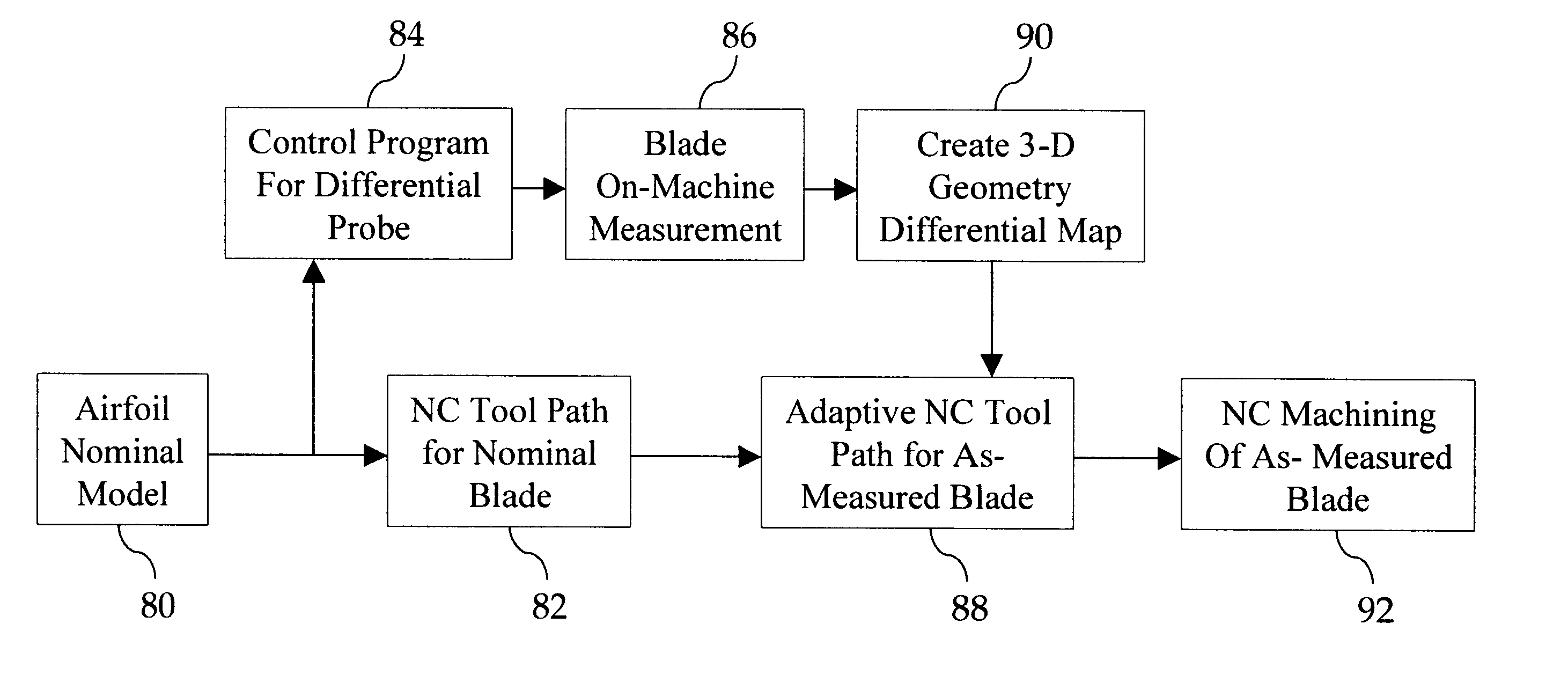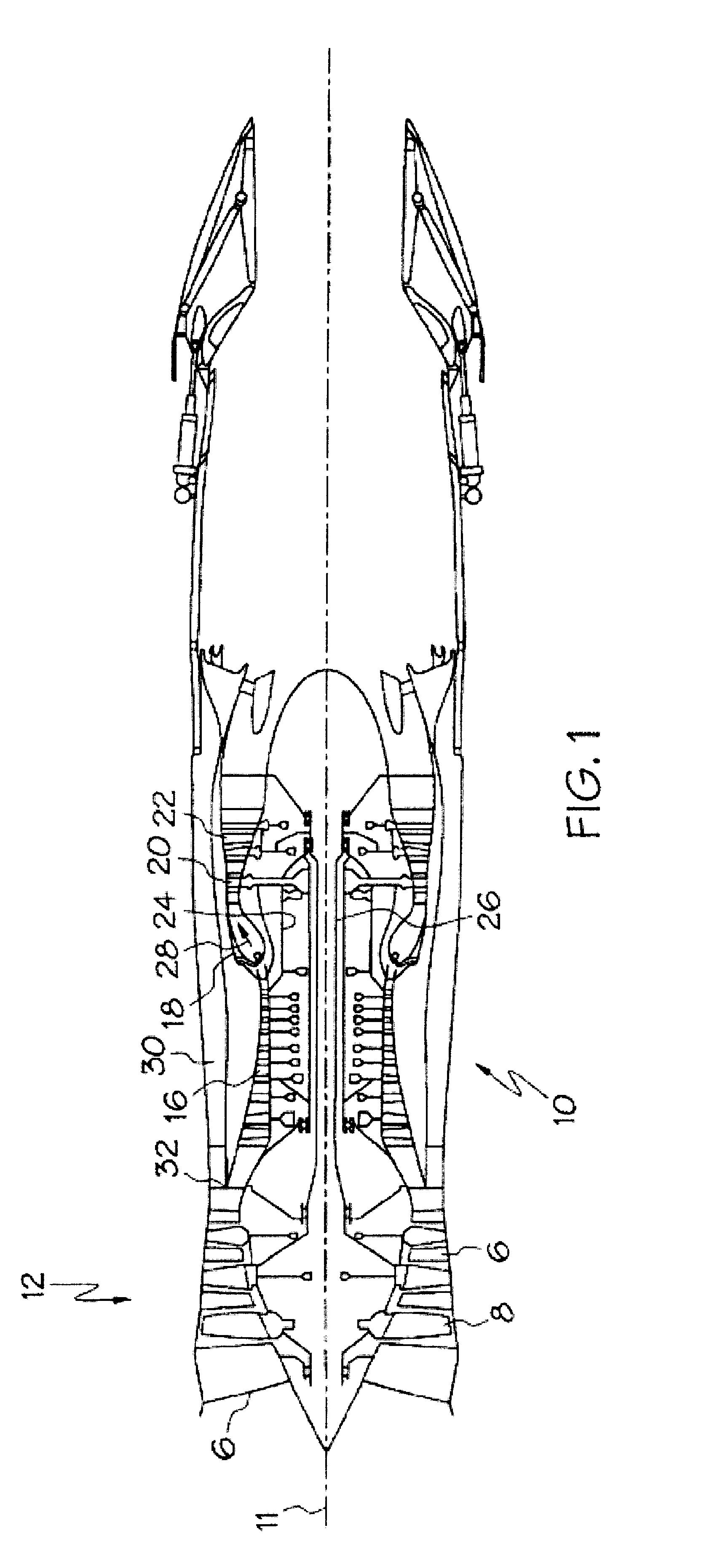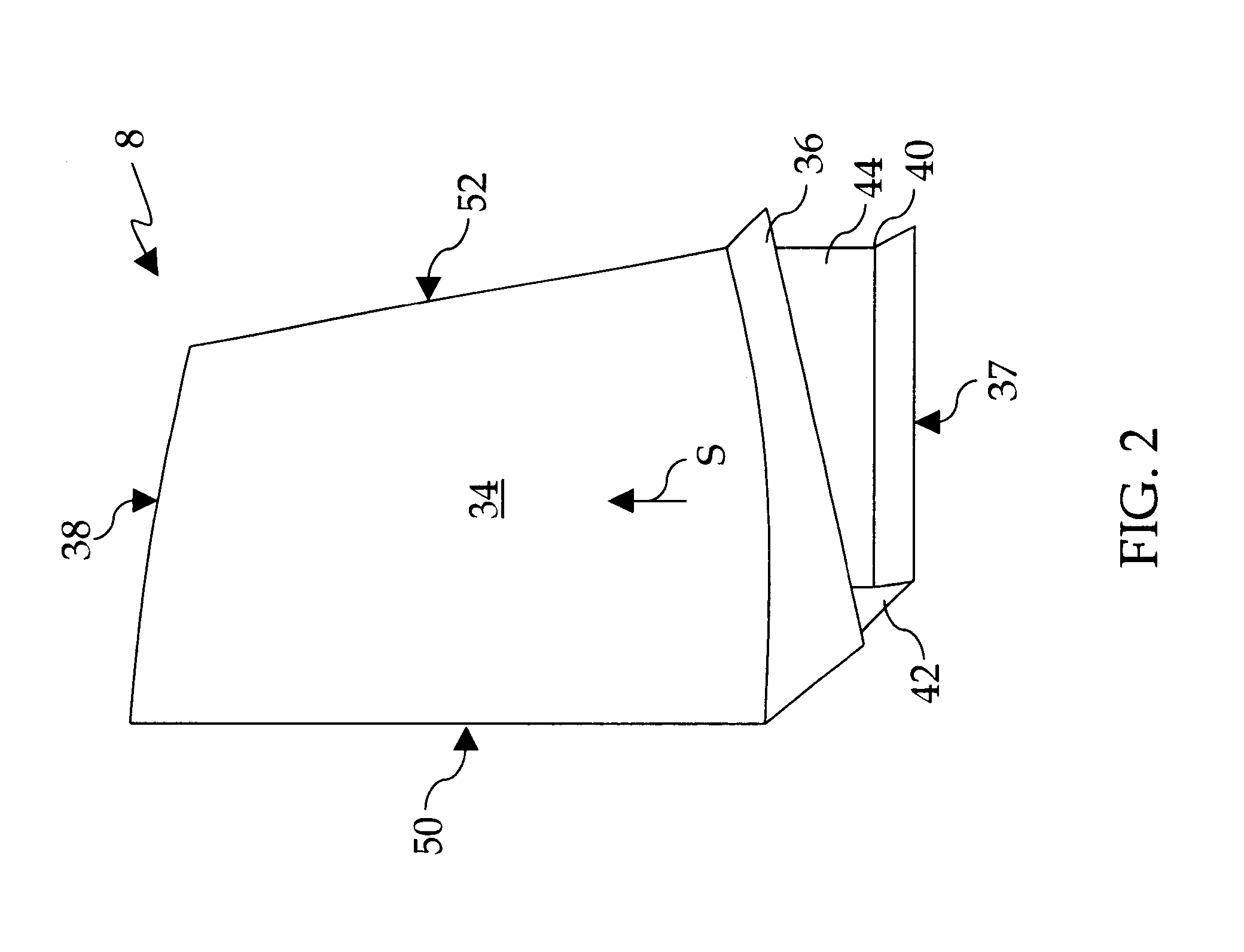Systems and methods for automated sensing and machining for repairing airfoils of blades
a technology of automatic sensing and machining, applied in the field of airfoil repair, can solve the problems of airfoils of gas turbine engines that are regularly exposed to harsh operating conditions, susceptible to the formation of damage areas, cracks, pits and depressions, etc., and achieves the effect of simple airfoil repair and highly adaptive to blade geometry distortion
- Summary
- Abstract
- Description
- Claims
- Application Information
AI Technical Summary
Benefits of technology
Problems solved by technology
Method used
Image
Examples
Embodiment Construction
[0021]As required, detailed embodiments of the present invention are disclosed herein, however, it is to be understood that the disclosed embodiments are merely exemplary of the invention that may be embodied in various and alternative forms. Specific structural and functional details disclosed herein are not to be interpreted as limiting, but merely as a basis for the claims as a representative basis for teaching one skilled in the art to variously employ the present invention. The systems and methods described below apply to automated sensing and machining for repairing airfoil blades, however, in principle also apply to any automated sensing and machining systems and methods.
[0022]Referring now to FIG. 1, one example of an aircraft turbofan gas turbine engine is illustrated. While this exemplary turbine engine is shown, it is to be understood that the present invention applies to the repair of airfoil blades associated with the engine of FIG. 1, as well as any other fan, compress...
PUM
| Property | Measurement | Unit |
|---|---|---|
| volume | aaaaa | aaaaa |
| displacement- | aaaaa | aaaaa |
| shape | aaaaa | aaaaa |
Abstract
Description
Claims
Application Information
 Login to View More
Login to View More - R&D
- Intellectual Property
- Life Sciences
- Materials
- Tech Scout
- Unparalleled Data Quality
- Higher Quality Content
- 60% Fewer Hallucinations
Browse by: Latest US Patents, China's latest patents, Technical Efficacy Thesaurus, Application Domain, Technology Topic, Popular Technical Reports.
© 2025 PatSnap. All rights reserved.Legal|Privacy policy|Modern Slavery Act Transparency Statement|Sitemap|About US| Contact US: help@patsnap.com



